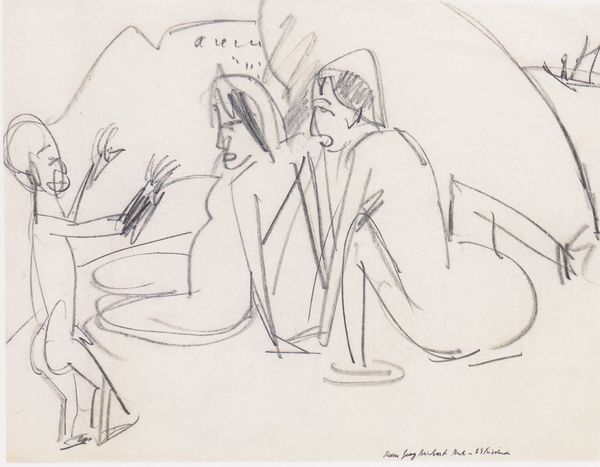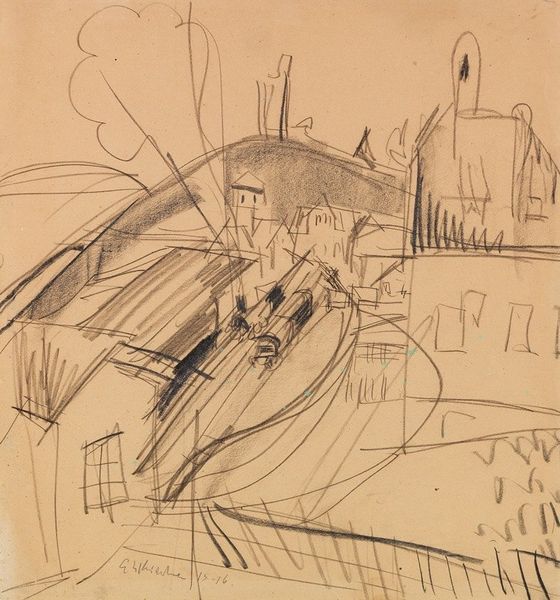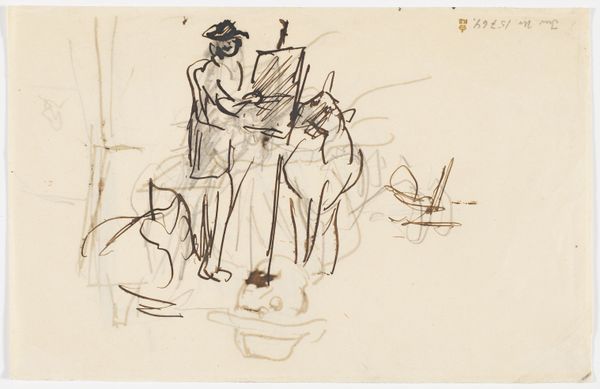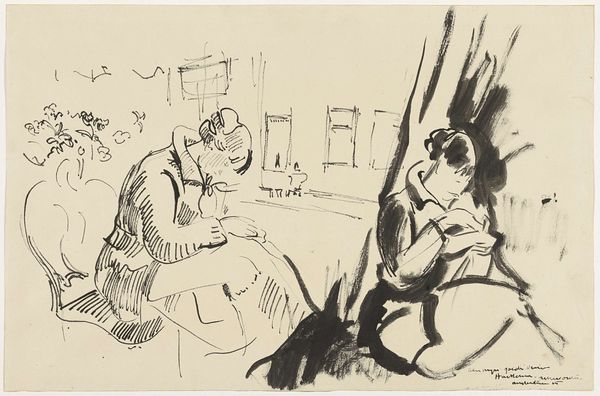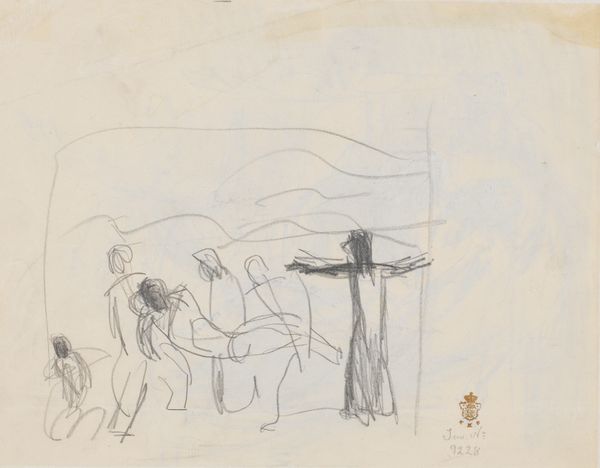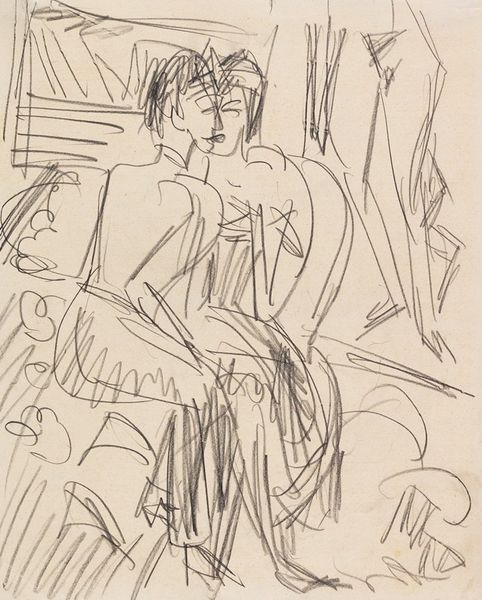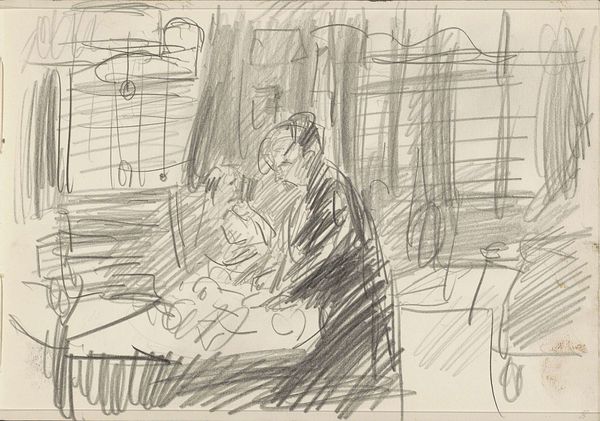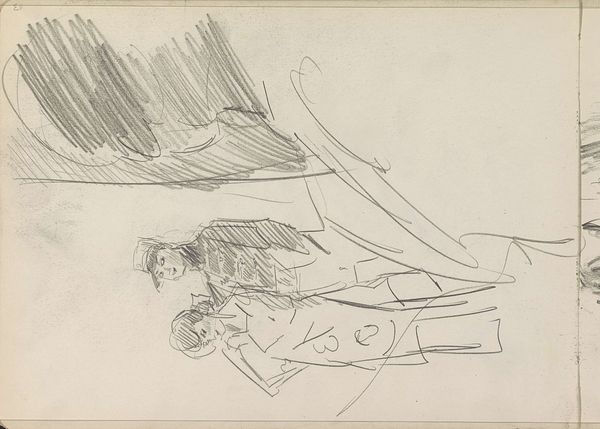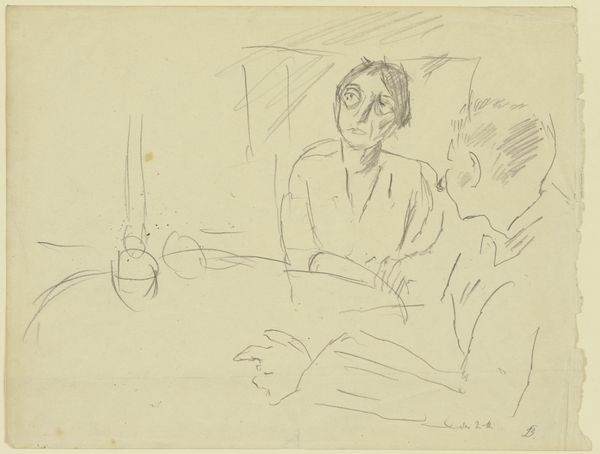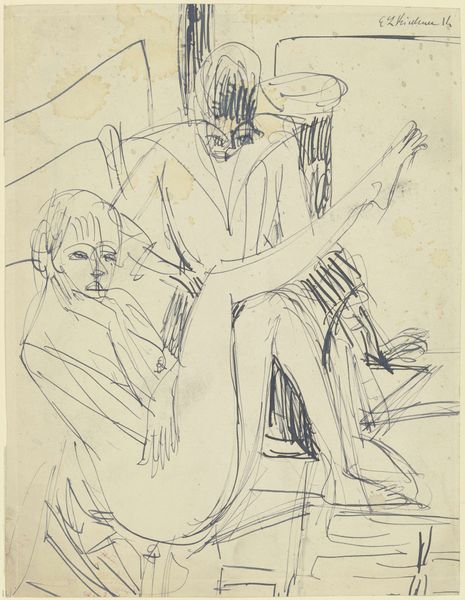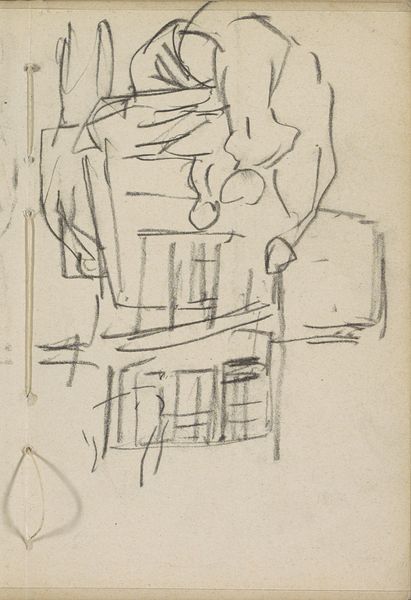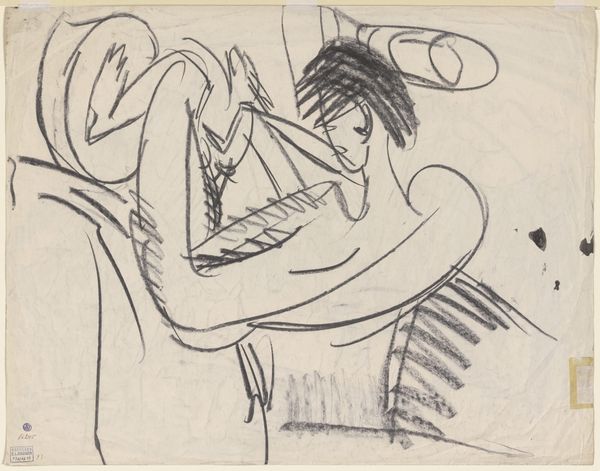
Copyright: Public Domain
Curator: This drawing, "People on the deck chair", was made by Ernst Ludwig Kirchner around 1935. You can see that the piece combines ink, pencil, and chalk on paper. It's currently part of the Städel Museum collection. Editor: My first thought? It's wonderfully incomplete! A tantalizing glimpse, like eavesdropping on a fleeting memory. I am especially taken by how economical the strokes are in describing the shapes of people, and even how little sounds of speaking or sighing have been given representation in squiggles over the male subject's head. Curator: Kirchner often used sketchbooks to quickly capture scenes, a habit developed, in part, out of a need to record life around him, even when circumstances might have been chaotic or emotionally taxing. Consider the social context here—the growing unrest in Europe. Was this a casual observation, or was he consciously recording the changing times? Editor: Absolutely! You sense that urgency, that need to pin down the ephemeral before it vanishes entirely. There is an awkwardness in how the subjects relate: he's speaking volumes and she stares listlessly away with only the suggestion of eyes, nose and mouth! But that tension, it's honest. Do you suppose those blobs represent old water stains, or some physical property from Kirchner’s process, that almost feel like they bleed through the psychic imprint from this very real moment? Curator: Possibly. These kinds of sketches weren't intended as finished works. The use of such mixed media seems more a matter of convenience. Available materials at hand. What resonates with me is the frank portrayal of bourgeois society, Kirchner never shied away from its contradictions and discontents, particularly that sense of isolation, which seems especially pronounced here, even though they're sharing a deck chair! Editor: Isolation indeed. It is funny, it is dark. So it’s Kirchner perfectly skewering society’s discomfort while never missing a chance for its delicious observation. Do you also find yourself lingering on that tiny dog under the one woman’s chaise lounge? Curator: Absolutely. Animals were another recurring motif in Kirchner’s work. They are a symbol of something primal or essential and that this is paired with an alienation in its figures makes a keen observation about the values and feelings of his own time. A time undergoing enormous upheavals. Editor: I think this reminds me that a casual drawing could capture more of our true emotional essence than the most laboured painting ever could. It’s that flash of immediacy that truly sings. Curator: Indeed. Kirchner's skill lies in elevating the everyday to something deeply evocative.
Comments
No comments
Be the first to comment and join the conversation on the ultimate creative platform.


